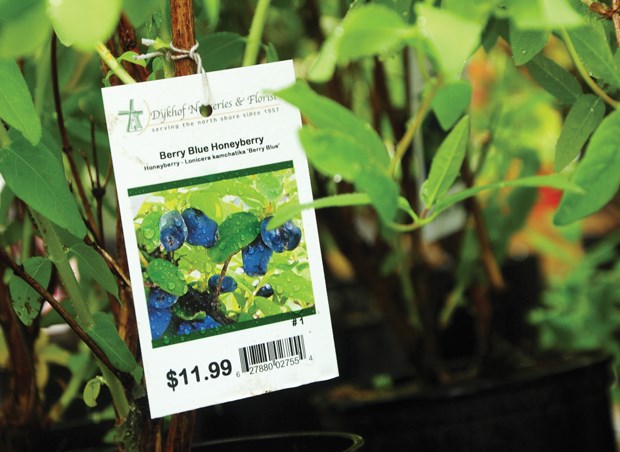The quest for new plants came early this year and the hunt is on for dramatic, and hopefully inspiring, plants for the garden.
It’s not always easy to find something new. So many new plant introductions are focused on improvements to the same plant with a new flower colour or dwarf size being introduced. There are few new plant genera to be found in the wholesale market, which supplies the landscape and garden centre industries. Part of the reason for the lack of new genera, or types of plants, is the fear of invasive species and import restrictions.
Plant hunters travel far and wide searching for something new. Britain, France, Germany and Holland have been traditional sources of new plant introductions for the past century. Asia is the old, new hot spot for plant introductions. Over the past couple of decades, the University of British Columbia Botanical Garden has been importing Asian plants for preservation, collection and study. But few of those plants have ever been released to the buying public or to the industry for development. The UBC Plant Introduction Scheme did release some new plants 10 years ago, like their Mandarin honeysuckle, but nothing much since.
It is a sad commentary that there is no vision or leadership to fund and focus appropriate public universities to develop and introduce new plants to the agriculture and horticulture sectors in British Columbia.
Private growers do work at breeding, developing and introducing new plants. But most local growers have a tough go at introducing new plants. Unfortunately, many consumers lack a “buy B.C.” or “grown in B.C.” preference when purchasing plants. And plant imports from the United States have taken some of the market share away from B.C. growers. There are some local nursery growers that do introduce new plants for the landscape and garden industry. Piroche Plants, for example, has been introducing plants from China for more than 20 years. Piroche (pirocheplants.com) is a wholesale nursery that sells to the landscape construction industry and garden centres. Valleybrook, more commonly known as Heritage Perennials (perennials.com) is another of the great B.C. plant growers that introduces new plants in Canada. Many of Heritage’s new plant introductions are of American or European origin. You can find the Heritage Perennials in blue pots in many local garden centres. Both of those growers’ products can be reviewed online and ordered through local garden centres.
I am picky when it comes to trying new plants. No prima donnas please. Plants have to grow and thrive in our region’s climate, and be beautiful or perhaps edible. And no plant is proven in my books until it survives without too much help for at least three to five years.
Here are a couple of new plants that might be worth a try.
Yuki Cherry Blossom Deutzia is a variation on the theme but Deutzia is worth growing in most gardens. Deutzia gracilis is a small-sized, deciduous and white-flowered shrub that blooms in spring. It is the parent of Deutzia Yuki. Introduced by Proven Winners (provenwinners.com), Yuki is smaller than the parent at approximately 60 centimetres and has a pink flushed flower colour versus the pure white flower of the parent. The smaller size is ideal for pots, balconies and small-space gardens. Deutzia prefers full sun in spring but it will flower in light shade only. It’s hardy, reliable and has shown some deer resistance just like its parent.
Another plant that I intend on growing this year is called Haskap (Lonicera caerulea), also known as blue honeysuckle or honeyberry. There is some excellent information on this plant at fruit.usask.ca/haskap.html and haskap.ca.
Dr. Bob Bors, of the University of Saskatchewan department of sciences, describes Haskap berry flavour as, “Fresh raspberry/blueberry with a special zing common only to Haskap.”
Tundra and Borealis are two Haskap varieties that grow roughly 1.5 metres tall and wide in a loose, round shape with white flowers in early summer.
It grows best in full sun and prefers rich soil with a pH range of six to seven. Haskap fruit is roughly the colour of blueberry but the Haskap berry shape is longer and non-uniform. The edible berries are produced in late-June to mid-July.
I will never find all the plants I want through traditional sources. So I search at plant clubs, gardening societies and by visiting plant collectors across the province. I also make trips to specialty nurseries in search of the rare and exotic. B.C. growers, like phoenixperennials.com, or thimblefarms.com on Salt Spring Island, are great places to find cool plants.
Some plants are still mythical and elusive, like the much-touted Yucca filamentosa Bronze Age, which I have read about but have yet to see in the flesh, so the search continues.
Todd Major is a journeyman horticulturist, garden designer and builder, teacher and organic advocate. [email protected]



